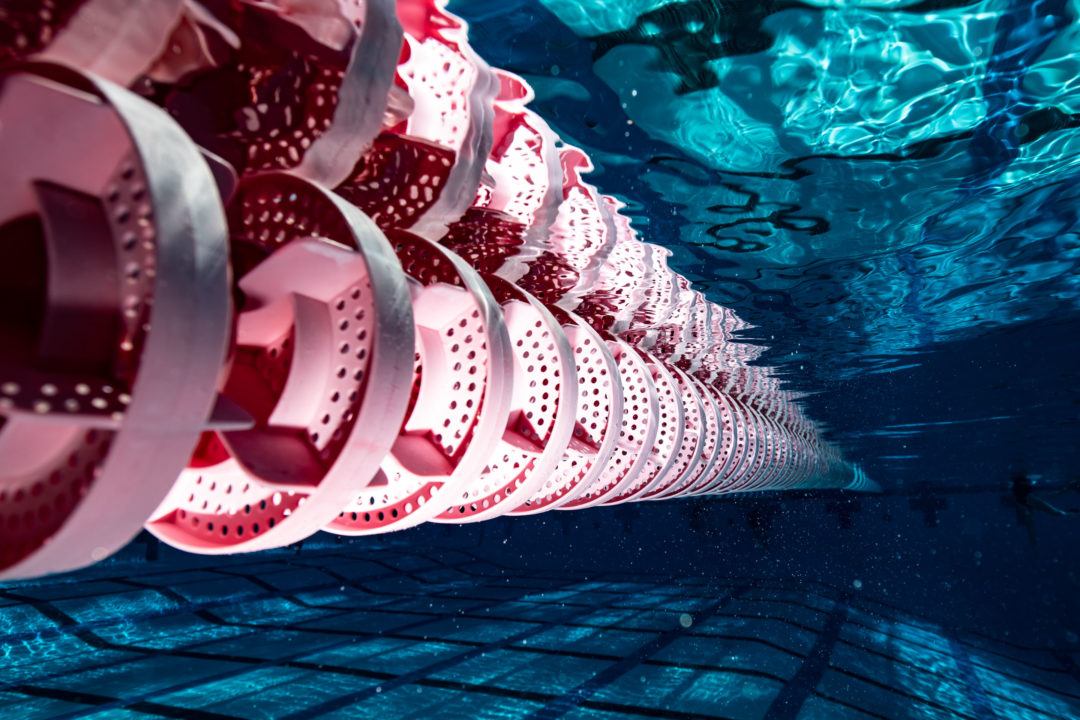Courtesy of Gary Hall Sr., 10-time World Record Holder, 3-time Olympian, 1976 Olympic Games US Flagbearer and The Race Club co-founder.
JOIN THE RACE CLUB HERE FOR HIGH QUALITY INSTRUCTIONAL VIDEO
We provide video on swimming for all age groups, triathletes and competitive swimmers. Explore a breakdown of our prices for weekly videos and more below.
Part II
In 1996, shortly after the Olympic Games of Atlanta, I wrote an article that was published in Swimming World Magazine with the same title as this one. In case you were wondering if you missed Part I, that was it.
Chuck Wielgus, former Executive Director of USA Swimming, once paid me a huge compliment by stating that that article in 1996 provided many of the ideas that he implemented during his 18-year tenure.
 I will recap the original 10 suggestions now and provide an assessment of where we are today, some 22 years later, with new suggestions on how we might make swimming a bigger and better sport.
I will recap the original 10 suggestions now and provide an assessment of where we are today, some 22 years later, with new suggestions on how we might make swimming a bigger and better sport.
1. Create a nine-month season for swimming.
Swimming is more of a year-round sport today than ever before, so that has not happened. Yet our sport still suffers from a large incidence of burn out; swimmers that quit the sport way too early. The impetus for this suggestion was to provide some time each year for young swimmers to not look at a swimming pool and to engage in other sports; to get a mental and physical break. I still believe that would be in swimming’s best interest over the long run.
2. The age group workout limit
This concept of restricting both the number and duration of workouts was really designed for the 10 and under swimmers, yet might be a good idea for up to age 12 or so. The idea was to help prevent burn out, and also to help protect children from the overzealous parents that unknowingly contribute to their children’s early retirement from the sport. While this has not happened, I would say that most swimming coaches are pretty good about restricting the number and intensity of practices for children.
3. Develop a three-hour age group meet format (one hour of warm up and two hours of competition)
Meets are run far better today than they were then, but we still run too many of those long, tiring 3 and 4 day meets that only the most dedicated parents or swimmers can tolerate. That meet format has not helped to grow the sport. While we may need a few of those types of meets each year, the majority of meets should be quick and fun.
4. Minimize the conflicts between swimming’s governing bodies
The hope here was to coordinate and consolidate the seasons of school swimming programs to not conflict with the USA swimming schedule. Since the USA Swimming schedule is now year-round, that is no longer possible. School swimming seasons for high schools remain extremely variable. Collegiate swimming programs extend further than ever before, starting essentially as school begins and ending in the end of March. The biggest difference today is that the majority of our Olympic athletes today are post graduates and not affected by the school swimming schedule.
5. Save America’s greatest resource, our swimming coaches
The concern here was that the majority our best coaches would take collegiate jobs, where their ability to coach post graduates or coach year-round would be restricted. Fortunately, that has not happened, as some of our best collegiate coaches today include post graduate programs. In addition, we have managed to develop an abundance of incredibly capable club coaches that continue to develop the talented pool of young swimmers in America.
6. Marketing, Marketing, Marketing
Swimming had been and continues to be a poorly marketed sport in America. During the Michael Phelps era, the greatest Olympian of all time, membership in USA Swimming barely grew. That trend is not just in swimming. Nearly every Olympic sport has had declining membership. The challenge is that we have a different generation of youth and parents in America; ones that are not so interested in having six dedicated days each week of training for anything, not just sports.
I believe that newly appointed CEO Tim Hinchey is on the right track in focusing on developmental swimming. Those are young swimmers that want to become proficient in swimming, but not Olympians, training once or twice each week for 45 minutes or so. That market has millions of potential members and hopefully, out of that pool of swimmers, will emerge our future Olympians that decide to go all in.
7. Clinics, Clinics, and more Clinics
On this point, we have done well. While there were few clinics available in 1996, today there are hundreds throughout our country every year for both swimmers and coaches. Some focus on motivation, others on training and some, like The Race Club, focus on technique. In addition, there are now online resources available to help educate swimmers, coaches, and parents. In the education department, things have improved tremendously.
8. Capitalize on the Olympic Games
It is curious that swimming goes from one of the most popularly viewed sports of the Olympic Games program, to a relatively obscure sport for the remaining 3 years in between. The World Championships, Commonwealth Games, Pan Pacific Championships, and all of the other major swimming competitions do not even come close to the same viewership. I am not certain what the solution is, but perhaps we have just not yet discovered the right format to show off our Olympic stars in a shorter, more digestible and entertaining competition. Out of sight, out of mind. We need to keep our Olympians in front of the camera and have people want to watch them.
9. Recreate the international drama of the Olympic Games every year.
It is a bit frustrating to see golf and tennis each having four major international championships every year, while swimming has one every four years. Major events take time to build, but they must be built in the right format. All of the other major swimming competitions, including World Championships, Commonwealth Games, Pan Pacific Championships, European Championships etc. are either too regionalized or too long for the Olympic Games viewers to watch. It would be nice if swimming had at least one major international competition each year that captured the Olympic Games viewer.
10. Increase the frequency of the Olympic Games and World Championships
In 1996, the Olympic Games and World Championships were held every four years. Today, the Olympic Games alternate every two years and there are both short course and long course World Championships. The IOC was smart to move the winter and summer Olympic Games (after 2000) to alternating two-year intervals, as viewers no longer need to wait four years to get their Olympic fix. The cost of running the Olympic Games has escalated so much, that few cities today are even capable or interested in hosting it. The solution will not be in having more frequent Olympic Games nor World Championships, but by creating sustainable, serious and entertaining international events that include the marquee names and that steadily grow in popularity.
This week, in Lanes 2-4 in our subscription, you can find great underwater video on one of the world’s fastest distance freestylers, American record holder Zane Grothe. You will also see one of our favorite drills on how to keep your head down, like Zane does so well.
https://theraceclub.com/sc-videos/freestyle-head-position-2/
Yours in swimming,
Gary Sr.

Gary Hall, Sr., Technical Director and Head Coach of The Race Club (courtesy of TRC)
Like The Race Club on Facebook
Follow The Race Club on Instagram
Follow The Race Club on Twitter
Connect to The Race Club / Gary Hall Sr. on Linkedin
[email protected]
See The Race Club HQ here.
THE RACE CLUB
Because Life is Worth Swimming, our mission is to promote swimming through sport, lifelong enjoyment, and good health benefits. Our objective is for each member of and each participant in The Race Club to improve his or her swimming performances, health, and self-esteem through our educational programs, services and creativity. We strive to help each member of The Race Club overcome challenges and reach his or her individual life goals.
The Race Club provides facilities, coaching, training, technical instruction, video, fitness and health programs for swimmers of all ages and abilities. Race Club swim camps are designed and tailored to satisfy each swimmer’s needs, whether one is trying to reach the Olympic Games or simply improve one’s fitness. Our programs are suitable for beginner swimmers, pleasure swimmers, fitness swimmers, USA swimming or YMCA swimmers, or triathletes; anyone who wants to improve swimming skills. All of our Race Club members share an enjoyment of being in the water and use swimming to stimulate a more active mind and body.


There is such an amazing opportunity for swimming to market itself as the perfect sport for the dual athlete. Low injury risk, flexible practice schedule, great cardio and even the ability to choose which meets you attend are huge benefits. The clubs that allow freedom for parents and athletes AND provide both a competitive and FUN culture could win the hearts of really great athletes.
Some excellent points for more discussion and focus on a few first, that have the biggest impact. Swimming is one of the highest level participated in sports/activity. # 9 in good/accessible/larger locations. Why have our Grand Prix events not taken off better from viewership?
Limitations in size of events but making them more TV watchable, we
re more like Tennis then Golf in terms stadiums. Our OT is a must attend /social event as well.
meets/formats and paying the pool cost and not having teams rely on meets for income.
The Grand Prix meets need to be a social event. Serve alcohol, keep it short and exciting, hold it at pools with great seating. Maybe bring in celebrities to give out medals? We need to find ways to bring non swimmers into the sport and wanting to watch. We also need a “bad guy” swimmer to stir things up a bit, cause drama. Having 3-4 big meets a year instead of one at the end of each summer(for the US) and hyping them is a start. Creating drama, allowing gambling on the races maybe? Or just the 50s? Anything to bring crowds in. Fantasy swimming on a bigger level(have an app for it or ask yahoo or espn to add… Read more »